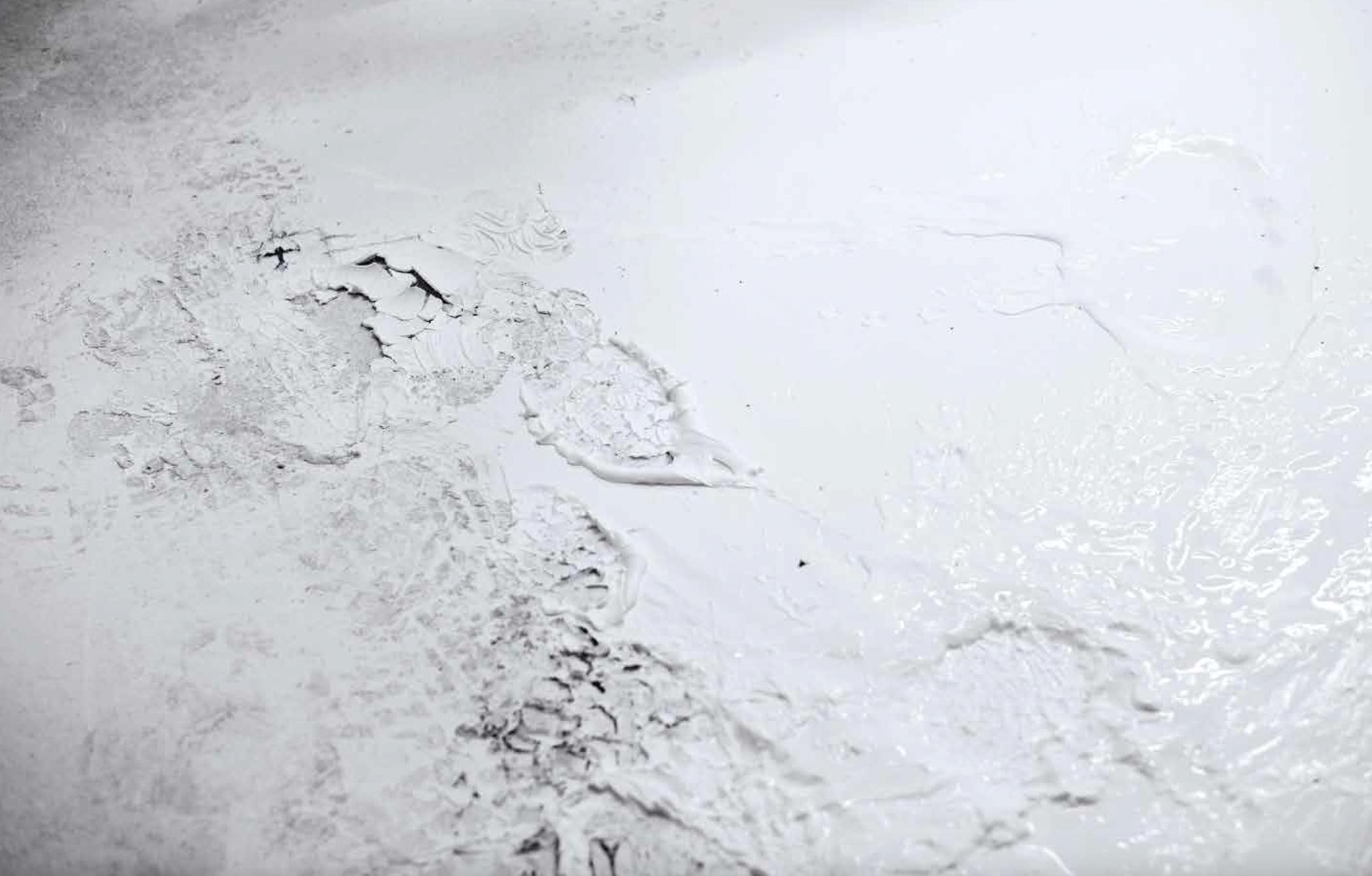
Sometimes it can be difficult to notice what is right in front of us: We are surrounded by surfaces; building façades, digital screens, textiles, plastics, and paint. We live on the crusty surface of our planet and within our tactile skin. Some even claim that the air we breathe is a surface.
Philosopher and media theorist Sybille Krämer states in her Metode keynote essay that “fertile thinking is oriented toward depth, and profoundness is desired, but superficiality is devalued” (Krämer, 2023). Anthropologist Tim Ingold claims the essential property of the surface is to withdraw and therefore that “scholars have long held surfaces in disdain” (Ingold, 2021: 149). Yet in art and architecture, the surface—usually defined as the aesthetic properties of materials—has always played a fundamental role with profound symbolic, functional, and economic value. Today, however, we are surrounded by surfaces conditioned by new technologies. For decades, scholars in the humanities have argued for new material awareness to confront the deep-rooted ideology of material production and overconsumption. Yet if surfaces habitually withdraw from attention and are often forgotten by scholars, there is a critical void for understanding our progressively techno-natural, everyday surroundings.
“What if surfaces are the real sites for the generation of meaning?” Ingold ponders in the book Imagining for Real (Ingold, 2021: 180). Currently, however, critical analyses of surfaces are fragmented and lack an explicit theoretical framework, as “being directed to the surface is intellectually nearly taboo” (Krämer, 2023). What happens is we look deeply at the surface? Will we generate new meanings?
In volume 1 of Metode, twelve Norwegian and international artists, architects, historians, and theorists have joined Tim Ingold, Sybille Krämer, and Metode’s Editorial Board to study surfaces, intently, methodically even. The volume Deep Surface consists of experimental essays written by Andreas Ervik, Neda Genova, Marius Moldvær, Severino Alfonso & Loukia Tsafoulia, Jenny Perlin, Adam Hudec & Beatrice Zaidenberg, Julie Barfod, Jakob Oredsson, Nick Walkley, and Benjamin Blackwell—and keynote essays by Krämer and Ingold. The participants were selected after a public open call, in which the premise for participation was to collectively engage in hybrid workshops for exploring experimental ways of collective thinking and new writing methods for creative knowledge production. Together with Ingold, Krämer, and Metode’s Editorial Board, the participants have developed experimental essays about surfaces through open peer-review feedback, co-writing, critical readings, and exchange of ideas and experiences.
Researching surfaces
The fact that surfaces are often forgotten by scholars, is in line with what Jane Bennet (2010) has described as the Western societies’ lack of ability to read material surroundings. Although the relationship between materials, technology, and culture has a strong research tradition in humanities (see for instance Collins, 1959; Barthes, 2009; Meikle, 1995), the last two decades have seen a renewed interest in materials, ontology, and culture—as a means to confront the overconsumption ideology.1 Within art-, design-, and architecture history, the so-called material turn in humanities has generated a renewed interest in cultural histories of materials.2 The theoretical starting point of Metode’s first volume Deep Surface, is in alignment with the material turn in the humanities, but Deep Surface launches the surface—as such—as a fundamental site for critical analysis within art and architecture, with capacities of revealing profound aesthetic, technological, ideological, and ontological changes in the 20th century and 21st century.
During the 20th century, the dialectic between surface and depth has been a fundamental theoretical and critical concern across fine arts, crafts, design, and architecture (see Shklovsky, 2005; Krauss, 1979; Stroll, 1988; Didi-Huberman, 2005; Harman, 2022). These seminal studies have contributed with in-depth scrutiny of the surface from various disciplines within art-, architecture-, and design history, visual studies, philosophy, and aesthetics—connected to numerous concepts with dissimilar ideological, discursive, and philosophical implications.
Ingold’s recent scholarship on surfaces—together with Giuliana Bruno’s book Surface from 2017—are the primary critical literature for the current project. The previous research on surfaces in art and architecture reveals, however, a key theoretical argument: Surfaces tend to be theorized as something else. Either as a mediating agent or interface between content and form; a superficial or shallow obstruction that hides the essence of things; or a dialectic opposition to depth. Moreover, the surface has been theorized as materiality (Bennett, 2010; Picon, 2020; Thomas; 2021) or as relational media (Bruno, 2014; Krämer, 2015), and the effects of the surface have been of significant interest in phenomenology (Gibson, 1979; Zumthor, 2006), and in architectural design (Moe, 2010; Lovel 2013). In the present volume Deep Surface, however, we suggest that previous critical studies of surfaces have merely studied the surface of surfaces (as also argued in Halland & Johnslien, 2023). In order to truly study the depth of surfaces, volume 1 of Metode reverse the habitual quest for depth beneath the surface and asks instead: “How is depth revealed on the surface—as such?” This question becomes particularly urgent when thinking about future surfaces, as new high-tech materials such as 2D materials, Graphene, and other nanomaterials “is itself, essentially all surface,” as Benjamin Blackwell remarks in his Metode essay.
What is a surface?
The thirteen essays written for Deep Surface reveal how the surface is connected to various concepts with dissimilar ideological, discursive, and philosophical implications. “Surfaces are fundamentally ambiguous situations,” participant Jakob Oredsson states in his visual Metode essay. If surfaces are simultaneously inextricably intertwined and separated from an object—and also interrelates with its environment, as argued by Timothy Morton (2017: 143-144)—how to theorize a surface? Is it an event? Is it an interface? Or a solid boundary?